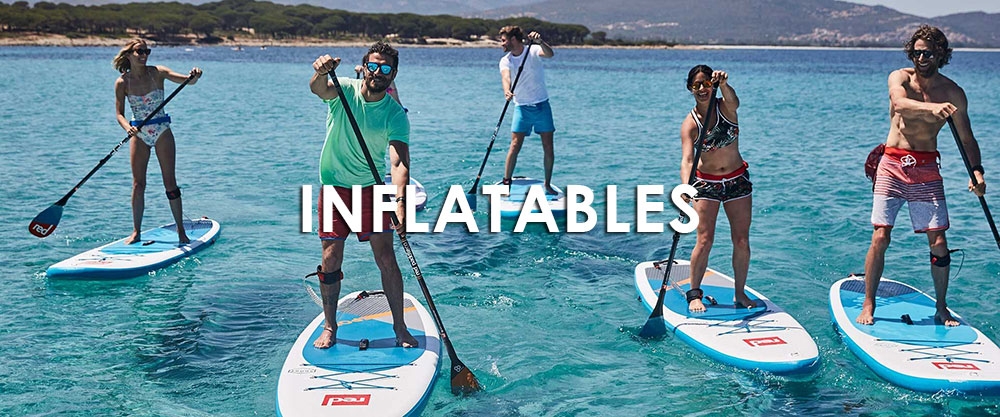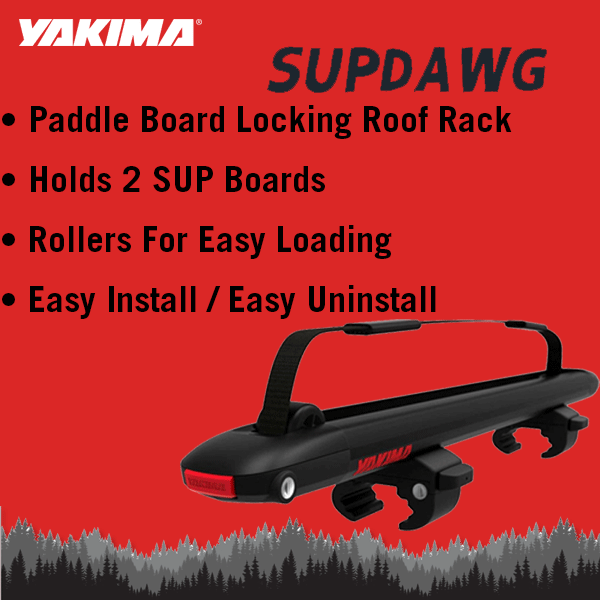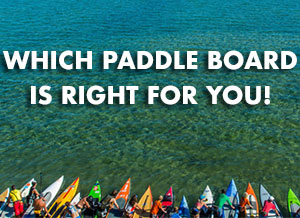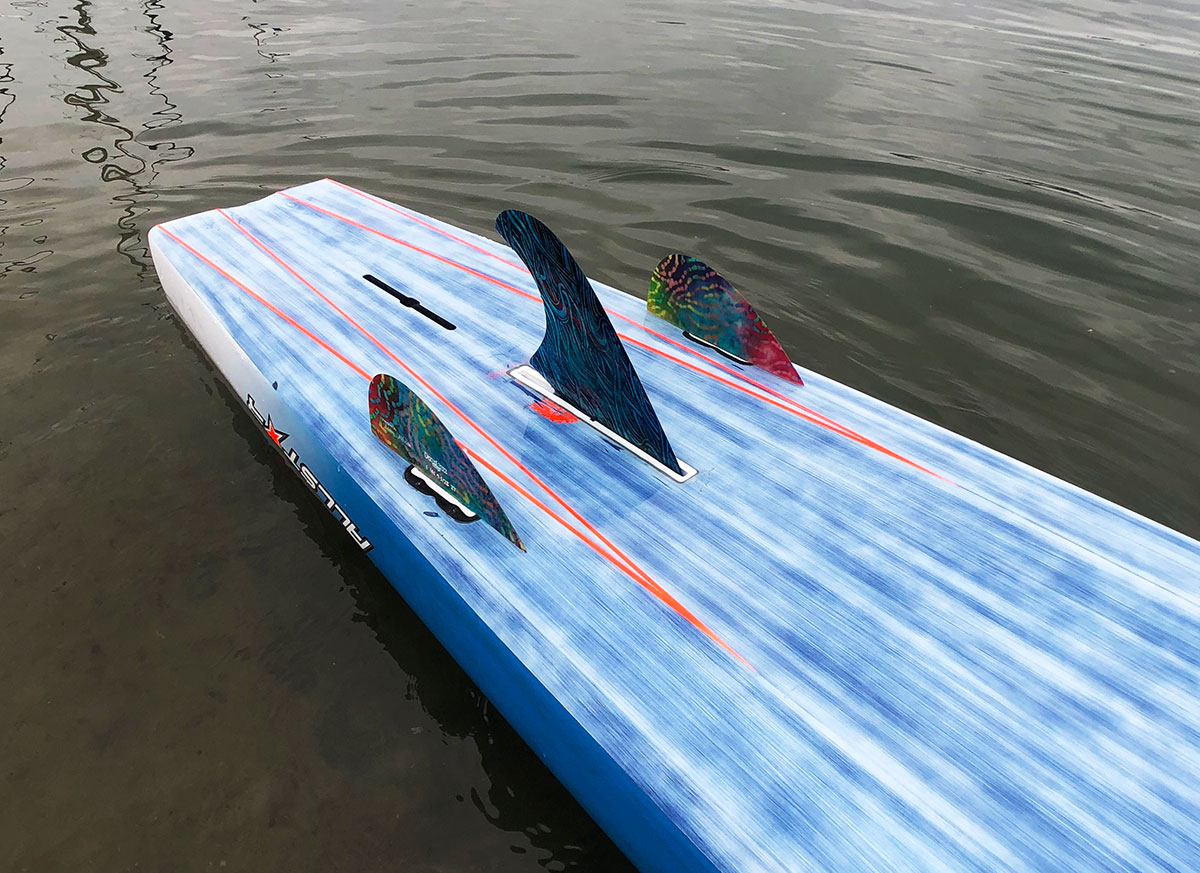Which of These Three Paddleboards is Right for You?
25
Sep
 Over the past decade, standup paddleboards gained significant popularity. People today love standup paddleboarding. What started as an oceanic endeavor for a couple of surfers, including Oahu's aquatic stuntman Brian Keaulana, Laird Hamilton, and some old-school surfing instructors from Waikiki, is now internationally ubiquitous, from beach breaks and harbors to hidden angling spots and lakes.
Standup paddleboarding, or SUP, is one of the most rapidly growing water sports. An incredible combination of surfing and kayaking, this sport essentially involves standing on your surfboard and using your paddle to propel yourself. It is exciting and fun. Standup paddleboards are much wider, longer, and more buoyant compared to conventional surfboards, which allows you to easily balance on them.
The market today offers a dizzying and exciting array of boards for racing, fishing, river running, and surfing. Constructions have run the gamut, as well, from exotic carbon, epoxies, and fiberglass to incredibly sturdy inflatable and foam models. This reason is why for beginners especially, these choices could be overwhelming and confusing. Heres a brief guide you can follow.
Over the past decade, standup paddleboards gained significant popularity. People today love standup paddleboarding. What started as an oceanic endeavor for a couple of surfers, including Oahu's aquatic stuntman Brian Keaulana, Laird Hamilton, and some old-school surfing instructors from Waikiki, is now internationally ubiquitous, from beach breaks and harbors to hidden angling spots and lakes.
Standup paddleboarding, or SUP, is one of the most rapidly growing water sports. An incredible combination of surfing and kayaking, this sport essentially involves standing on your surfboard and using your paddle to propel yourself. It is exciting and fun. Standup paddleboards are much wider, longer, and more buoyant compared to conventional surfboards, which allows you to easily balance on them.
The market today offers a dizzying and exciting array of boards for racing, fishing, river running, and surfing. Constructions have run the gamut, as well, from exotic carbon, epoxies, and fiberglass to incredibly sturdy inflatable and foam models. This reason is why for beginners especially, these choices could be overwhelming and confusing. Heres a brief guide you can follow.
Considerations
You will have to consider a number of choices before buying a standup paddleboard. First, you have to decide the purpose you are going to use your standup paddleboard for. You can use it for fitness, fun, touring, and racing, among other activities. For example, if you are a beginner, it is better to begin with a standup paddleboard designed for fitness and fun.Keep in mind that fitness and fun standup paddleboards are suitable for paddleboarding on calm and flat waters. Therefore, these standup paddleboards can just handle small to medium-sized waves. On the other hand, racing and touring paddleboards are for individuals who travel long distances while paddleboarding. These paddleboards reach high speeds and are better at handling the ocean waves. It is vital to choose a standup paddleboard that supports your size and weight. You will also have to consider weight capacity and volume before you buy a standup paddleboard.
Types of Standup Paddleboards
 We will discuss the three types of standup paddleboards in the following section:
We will discuss the three types of standup paddleboards in the following section:
1. Epoxy
Epoxy paddleboards are your conventional hard paddleboards. In most cases, epoxy boards comprise of EPS foam along with multiple layers of epoxy resin and fiberglass to prevent dings. EPS construction creates a lighter and sturdier hard paddleboard. These standup paddleboards are ideal for SUP racing, SUP surfing, and long-distance expeditions.2. Inflatable
For many people, inflatable standup paddleboards make perfect sense. These paddle boards are safe for both kids and beginners, easy to transport and incorporate modern composite materials. These materials include military-grade outer skins, which are extremely durable. So much so, that now inflatable boards are the paddleboards of choice for most SUP'ers on rugged, rock-strewn rivers. Inflatable standup paddleboards gained popularity considerably over the years since they are the easiest when to sport and transport. All you need to do is pump up the standup board to the recommended PSI and you are good to go. Believe it or not, inflatable standup paddleboards are just as rigid and firm as epoxy boards since they feature the latest drop stitch technology along with high-density PVC layers, which create a solid SUP. Inflatable standup paddleboards are perfect for- First Timers
- People who travel on a frequent basis and like to bring their paddleboards with them
- People with limited storage capacity in their cars or homes

3. Soft Top
Soft-top standup paddleboards can offer you a lifetime of amazing fun and excitement without breaking the bank. That said, they are more than merely economical and durable. These boards are completely functional across a broad variety of water surfaces. Although a majority of first-time buyers may consider soft-top paddleboard a great family board due to their price, these paddleboards are also multi-purpose. Note that the front deck of a soft-top paddleboard comprises of a spongy, soft material. However, the core of these paddleboards features sturdy and strong materials that will last you a lifetime. The core is carefully made of an EPS blank and it has a stringer for rigidity. Some soft-top paddleboards have an extra layer laminated with epoxy resin and fiberglass. These paddle boards are ideal for- Thrifty paddlers
- Kids or a family beach or lake house
- Recreational cruising
- People who have a difficult time taking care of expensive things
Pros and Cons of Epoxy Paddleboards
Pros
- These are the most agile and flexible kind of paddleboard
- They offer the best tracking, glide, and control
- They are the most ideal choice for SUP racing, SUP surfing, as well as long-distance expeditions
Cons
- It is typically, the priciest type of paddleboard on the market
- It is the most difficult paddleboard to transport
- Epoxy is also the least durable material for paddleboard (it is prone to dings and scratches if you drop it)
- You will need a lot of storage space in your house to store this paddleboard. Moreover, you will need external racks or a large vehicle to transport the board to and from your home
Pros and Cons of Inflatable Paddleboards
Pros
- These paddle boards are easy to carry and store. When you deflate the inflatable paddleboard, they roll up to the compact size of sleeping bags
- Inflatable paddleboards are the most durable and sturdiest kind of paddleboard on the market. If you drop them, they wont scratch or ding
- In most cases, these boards are more economical compared to epoxy paddleboards
- You could travel with these paddleboards anywhere you want (even on an airplane!)
Cons
- Usually, epoxy paddleboards perform much better than inflatable paddleboards
- You will have to inflate and deflate the paddleboard every time you use it, which can be a hassle
Pros and Cons of Sot Top Paddleboards
Pros
- These are the most affordable kind of paddleboards
- They are a great choice for your kids
- If you fall on the boards deck, it will not hurt
Cons
- Usually, epoxy paddleboards perform much better compared to soft SUPs
- These paddleboards weigh more than epoxy and inflatable paddleboards





